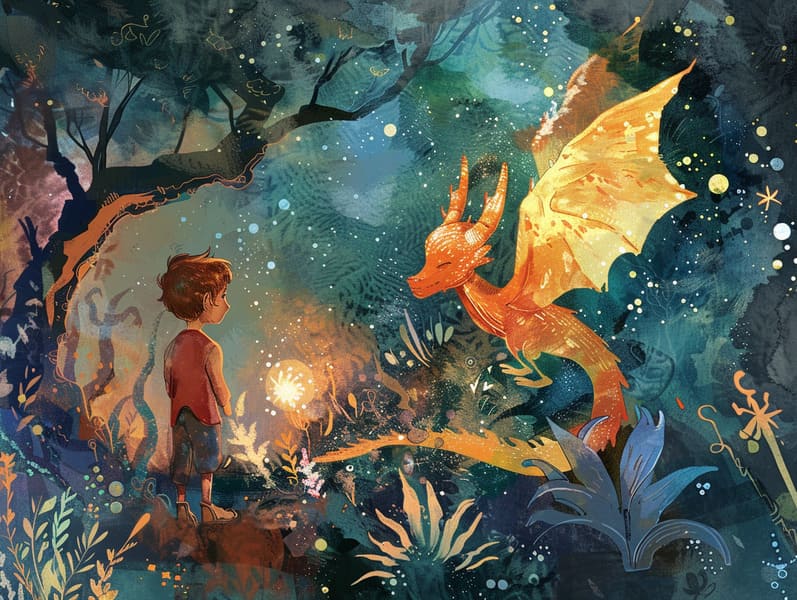The Journey of Old Fairy Tales with Its Immortal Delight.
The Journey of Old Fairy Tales with Its Immortal Delight.
Blog Article

Children's fairy tales have old origins. These stories have been shared from one generation to the next well before they were ever inscribed. They came from a variety of traditions, including Eastern traditions. They were initially shared among grown-ups, often carrying themes and messages relevant to the societal norms and beliefs of the time.
The Brothers Grimm, Jacob and Wilhelm, were among the first to gather many of these beloved narratives. Their published works, "Grimm's Fairy Stories," included tales like "The Story of Cinderella," "The Bread Crumb Trail," and "Schneewittchen," which have since become cornerstones in the world of traditional fairy tales. Similarly, H. C. Andersen's delightful narratives, such as "The Mermaid's Tale," and "The Little Duckling," have captivated hearts worldwide, solidifying their place in the pantheon of classic fairy tales.
Though they are centuries old, traditional fairy tales remain as meaningful as ever, especially as children's bedtime stories. These whimsical stories are now available in numerous formats, including gorgeously illustrated books, magical animations, and online fairy tales.
Their unwavering allure can be attributed to several charming aspects:
Moral Lessons: Classic fairy tales often present important moral lessons. Tales like "The Tale of the Boy Who Cried Wolf" teach the virtue of being truthful, while "The Race of the Tortoise and the Hare" highlight the traits of steadfastness and unpretentiousness. These tales offer little ones clear distinctions between correct and incorrect, molding their moral compass in a soft yet lasting way.
Sympathy and Perception: Traditional fairy tales frequently include heroines facing trials and tribulations, provoking listeners to comprehend with their struggles and cheer for their triumphs. For instance, "Beauty and the Beast" teaches us the benefit of seeing beyond the surface to understand the true being of a individual, cultivating understanding and awareness.
Cultural Appreciation: Many traditional fairy tales are rich in the cultural contexts from which they originated. Learning from these narratives can provide informative snapshots into different societies, enhancing a sense of world appreciation and comprehension.
Imagination and Innovation: The supernatural elements in timeless fairy tales—enchanted forests—unleash children’s innovations. These stories carry readers to enchanted realms, encouraging inventive dreams and a sense of magic that endures a lifetime.
Timeless fairy tales are not only spellbinding but also educational. They act as enchanted tools in advancing various thinking and feeling skills in children. When classic fairy tales are recited, they advance speaking abilities by bringing new phrases and elaborate sentence structures. This practice also boosts auditory skills and attention, as kids remain attentive, ready to see what happens next.
Furthermore, reflecting on the themes and characters of classic fairy tales can nurture evaluative skills and reasoning skills. The young are instructed to notice patterns, forecast, and know cause and effect. These examinations also boost young readers convey their thoughts and feelings, advancing their emotional intelligence.
In today’s electronic age, the presence of digital storybooks has made these fairy tales more obtainable than ever. Web platforms and digital apps provide broad selections of timeless fairy tales that can be accessed or listened through anytime, anywhere. Fairy tales told out loud are particularly favored, making available an immersive method for young ones to enjoy these charming tales. Spoken stories and read-to-me videos carry characters and settings to life, often accompanied by entrancing soundtracks and harmonies that improve the storytelling journey.
The timeless charm of classic fairy tales lies in their ability to alter to modern days while sustaining their fundamental ideas. Contemporary reinterpretations of these tales often present more representative characters and modern settings, making them familiar to today’s audience. However, the core values of courage, kindness, and justice remain unchanged, continuing to affect young readers of all ages.
Traditional fairy tales also offer a sense of security and predictability. They bestow a systematic narrative with a transparent beginning, middle, and end, often wrapping up with the wrap-up of conflicts and the triumph of good over evil. This reliability can be placating for young readers, rendering a sense of unwaveringness in an constantly changing world.
Traditional fairy tales continue to enthrall and coach new generations, maintaining their fascination and value in modern society. As kids' bedtime tales, they impart upon a perfect blend of fascination and comprehension, advancing moral values, empathy, and creativity. The abundance of web-based fairy tales and the in demand status of fairy tales told out loud promise that these old tales remain available to new generations.
By defending and communicating these narratives, we continue to praise the rich tapestry of cultural heritage and cultural heritage. Whether you are seeing a vibrantly illustrated book, accessing a web-based collection, or listening to an narrated book, the grandeur of bedtime fairy tales is always within reach. These fairy tales convey of the unending nature of tales and its ability to tie us across generations and cultures.
Even if you are perusing a artistically illustrated book, exploring a digital collection, or listening via an spoken story, the grace of traditional fairy tales is always within reach.
These fairy tales teach us of the perpetual magic of stories and its ability read more to unify us across centuries and lands, forging a link that enchants and educates alike.